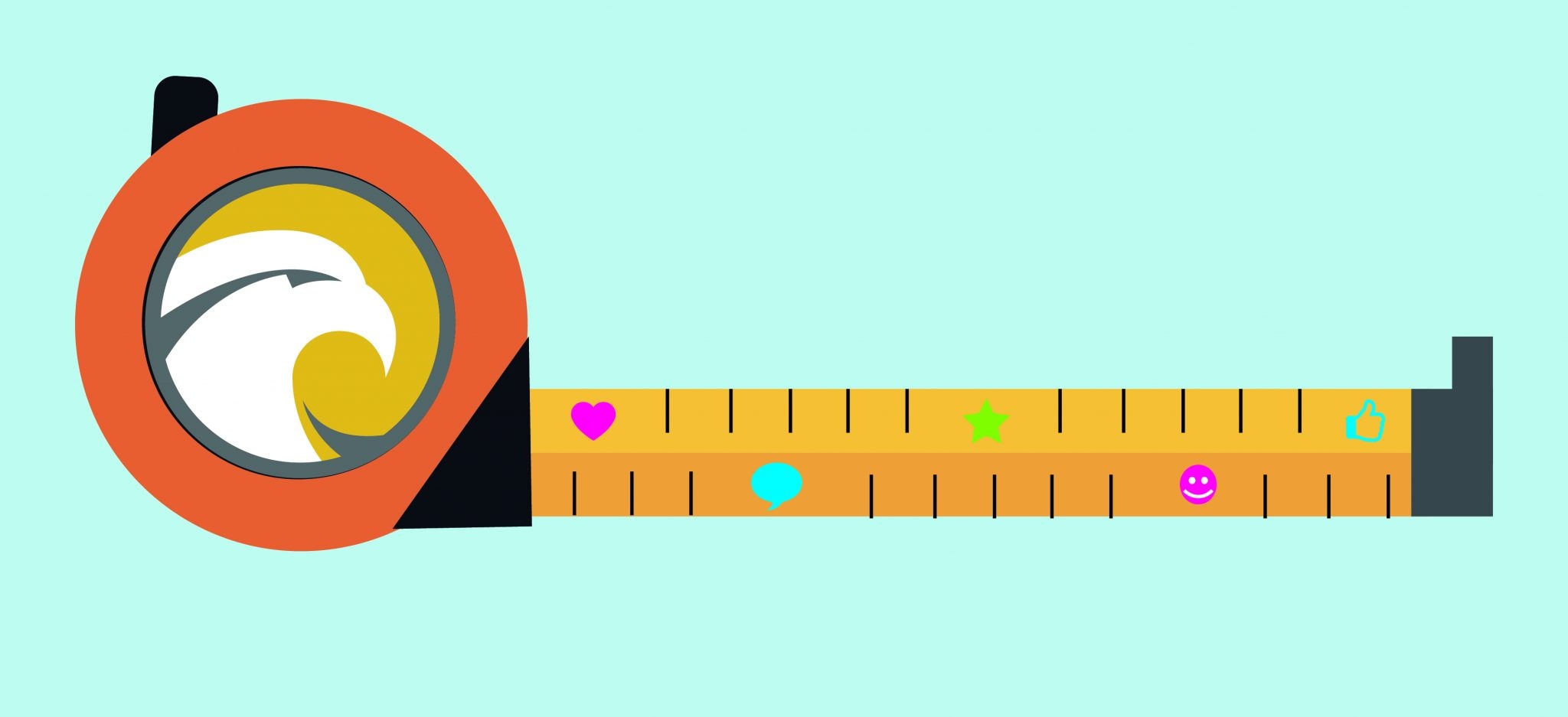06 Jul

We’ve all heard the phrase Customer Loyalty. But what does it mean and more importantly how do we measure this for our business?
Wouldn’t it be great to know how loyal our customers really are? Well, we certainly think so. But… if only there was a way for us to measure how much our customers really love us.
Well, when there’s a will, there’s a way. Measuring customer loyalty is no problem for any business – if you know how.
But first, before we get into the nitty gritty of how to measure customer loyalty for our brand, let’s have a think about why it’s important for us to create an environment that actively creates loyal customer advocates.
The Truth About Loyal Customers
The truth about loyal customers is that their impact on our business success is much greater than what people actually think. In fact, a loyal customer is…
- More likely to big you up to friends, family and colleagues
- More likely to come back and spend again
- More likely to spend more than a new customer
- More likely to provide feedback into how you can be better
- More likely to try out more of your products and services
Understanding the importance of a loyal customer is the first step in customer loyalty management. When all things are said and done, your loyal customers are your greatest source of revenue.
Well, just let the stats speak for themselves.
Customer loyalty is the key to the longevity of any organisation. A business that invests too much in attracting new clients – rather than sustaining existing ones – will ultimately run their costs through the roof and to no avail. If you want a booming business, you simply need to have a loyal customer base.
But don’t worry! Us at GroHawk are here to help you with that.
Let’s find out 3 easy ways on how to measure customer loyalty.
Method 1: Net Promoter Score
At GroHawk, we’re all about NPS. It’s the most popular metric used to measure customer loyalty and that’s mainly because of how simple it is! Just about anyone and any business can use NPS to find out how much their customers really love them. All it takes is one simple question:
On a scale of 1-10 how likely are you to recommend us to a friend or colleague?
Ask this question to your customers and there’s no doubt you’ll receive a large range of responses. Even though we all want those 10s, don’t worry what you get! We’re only taking the first step in creating customer loyalty here!
Depending on the responses, the NPS divides your customers into three distinct groups:
Detractors: Customers which answered a score between 1-6 are known as detractors. These customers have had a not-so-great experience with you and will likely not buy from you again. There’s also a danger of these damaging your hard-earned reputation through negative word of mouth – we need to be keeping an eye on these!
Passives: Those customers which scored you a 7 or 8 are referred to as passives. They were satisfied with your service, but may still go to another competitor despite a good experience. It’s very difficult to retain this group, but we’ll discuss how to do that another time.
Promoters: Remember the mile-long queues outside the Apple Store right before the launch of the iPhone X? THAT is what you call promoters – customers that rant and rave about your business, are willing to talk you up to their friends and will buy from you again, again and again.
Now, clearly we all want a business filled with promoters, right? Well, first step is to find out your NPS.
To do that simply subtract the percentage of detractors from the percentage of promoters. Now you’ve got your company’s Net Promoter Score and are ready to take the leap in increasing customer loyalty for your products.
In order to track down customers and ask them this simple question, it will ultimately take time – a valuable resource we cannot afford to waste. Fortunately, there’s a world wide web out there with plenty of helpful feedback tools at your disposal *cough*. Making it really easy (almost too easy) for you to find out your NPS.
Method 2: Repurchase Ratio
As the title suggests, the repurchase ratio measures the number of repeat customers in comparison to one-time purchasers. Of course the higher the ratio, the greater level of customer loyalty.
Now, if we’re completely honest this method makes the NPS look like an absolute cakewalk.
In order to measure customer loyalty this way you must first identify your type of business model. For example, with subscription based organisations, you must divide the number of customers that are retained after their first contract period by the ones that cancel after their first contract.
For other business models, that revolve around transactional purchases, that’s where it starts to get tricky. In order to know the number of repeat buyers your business has, you must first calculate the average time between the first and second buys between repeat customers, as well as its standard variation.
Now add two times the standard variation to the average time. You will now have captured 95% of your repeat customers, divide this number by the number of non-repeat buyers and just like that you have your (estimated) repurchase ratio.
You haven’t fallen asleep yet have you…
Ok good! So, if you want my advice, stick to NPS! It’s much more accurate and less… erm boring.
Then again, if you would like to take the scenic route, I’m sure there are lots of tools that could help this too – check online.
Method 3: Upselling Ratio
Our third and final method of how to measure customer loyalty is the upselling ratio. It’s quite similar to the repurchase ratio but fortunately, a lot easier. What’s interesting about this method of measuring customer loyalty is that it goes off the number of customers buying new products.
Buying new products is a great indication of a customer that is loyal to your business as they clearly loved your experience and product so much that they trust your other offerings too. Let’s have a quick look at how we can work this one out:
To calculate the up-selling ratio, divide your number of customers who have bought multiple products by the number of customers with a single product.
Simple right? If you have the information available, why not give it a shot!
So, now you should know three different ways of how to measure customer loyalty for your business. From here, you can now go away and find out how much your customers really love you!
Don’t make it hard for yourself though, as mentioned earlier there are so many helpful platforms out there that will do the hard work for you! At GroHawk, we use the NPS system to measure customer loyalty for your business so that you can go away and reap the benefits of having loyal, raving advocates for your brand. Give it a try for free today!








